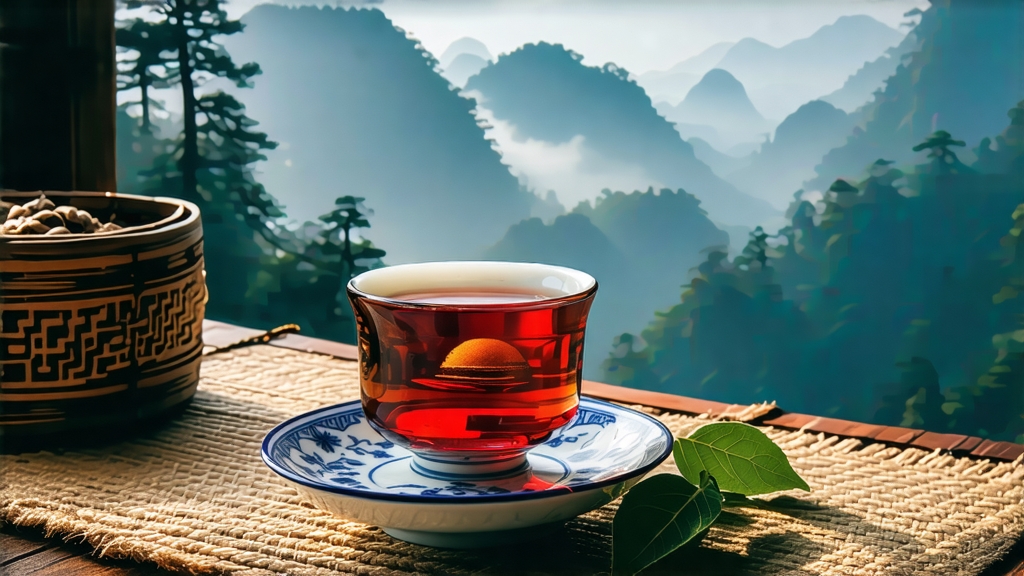
When European merchants first tasted a dark, wine-red liquor from the port of Xiamen in 1604, they called it “black tea,” unaware that the leaves had actually traveled only a few hundred kilometers from the granite gorges of the Wuyi Mountains in northern Fujian. That tea was Lapsang Souchong—today celebrated as the prototype of every black tea on earth and still the only one whose leaves are gently kissed by fresh pine smoke. To understand Lapsang Souchong is to hold a living time capsule of Chinese craft, maritime trade, and mountain ecology in your palm.
History: From Mountain Hermitage to Global Passion
Local legend claims the smoke-drying technique was born during the late Ming dynasty when a Qing army unit bivouacked in Tongmu village forced tea farmers to flee. Upon returning, the growers found the leaves oxidizing past the green-tea stage; to save the harvest they dried them quickly over green pine fires. The accidental batch was rushed to the Dutch East India Company agents who, enchanted by the campfire sweetness, paid triple the usual price. By the early Qing, caravans of porters carried woven bamboo chests along the Tea Road through Mongolia to Russia, where Lapsang became the standard against which all “bohea” was judged. When Earl Grey later perfumed Chinese black tea with bergamot, it was Lapsang he started with; when Scottish blenders created the first breakfast teas, they cut the malty Assam with its smoky Wuyi soul. Thus, a village of fewer than two hundred households once dictated the morning taste of half the world.
Terroir: Why Only Tongmu Can Birth True Souchong
The core appellations—Tongmu, Guadun, Miaowan—sit inside a 220-square-kilometer national nature reserve at 27° N latitude. Granite cliffs funnel humid subtropical air into a cool cloud belt that keeps average daytime temperatures below 25 °C even in July. The soil is a shallow, acidic sandy loam rich in quartz and trace minerals; roots must dive through fissures in the rock, concentrating polyphenols and aromatic oils. Most importantly, the reserve is the last place in China where Pinus taiwanensis and Masson pine can be legally harvested for small-scale firing; the resinous heartwood imparts the unmistakable longan-and-sandalwood aroma that imitations from India or Africa never quite capture. In short, geography writes the score, while pine writes the lyrics.
Cultivars: The Four Faces of Souchong
Although Western catalogs often list “Lapsang” as a monolith, connoisseurs recognize four distinct styles, each tied to a specific cultivar and processing tweak:
- Traditional Smoke-Dried Souchong (Xiao Zhong): Made from the diminutive-leaf Wuyi Caicha bushes, plucked at one-leaf-and-a-bud in early May. After full oxidation, the leaves are laid on bamboo sieves three meters above a pinewood ember pit for eight hours, absorbing just enough smoke to perfume, not overpower.
- New-Style, or “Unsmoked” Souchong (Zheng Shan Xiao Zhong): Same Caicha raw material, but dried with hot air in a rotating drum. The cup is malty-honeyed with notes of dried longan and cocoa, allowing drinkers to taste the terroir without the campfire.
- Wild Souchong: Harvested from feral tea trees seeded by birds on 800-meter ridges. Leaves are broader, stems redder; oxidation is done in pine-log trays, yielding a resinous, almost incense-like finish that lingers on the palate for minutes.
- Jin Jun Mei: A 2005 innovation using only buds picked the first misty week of April. The downy tips are withered over a gentle pine-charcoal brazier, rolled into golden twists, then baked at 80 °C. The liquor shimmers amber-pink, tasting of caramelized lychee and saffron. Priced like Burgundy grand cru, it has become China’s diplomatic gift of choice.
Craft: The Eight Stages of Pine-Scented Alchemy
- Plucking: Dawn mist must still cling to the valley; leaves picked later than 10 a.m. are deemed too “yang” and reserved for lower-grade fannings.
- Indoor Wither